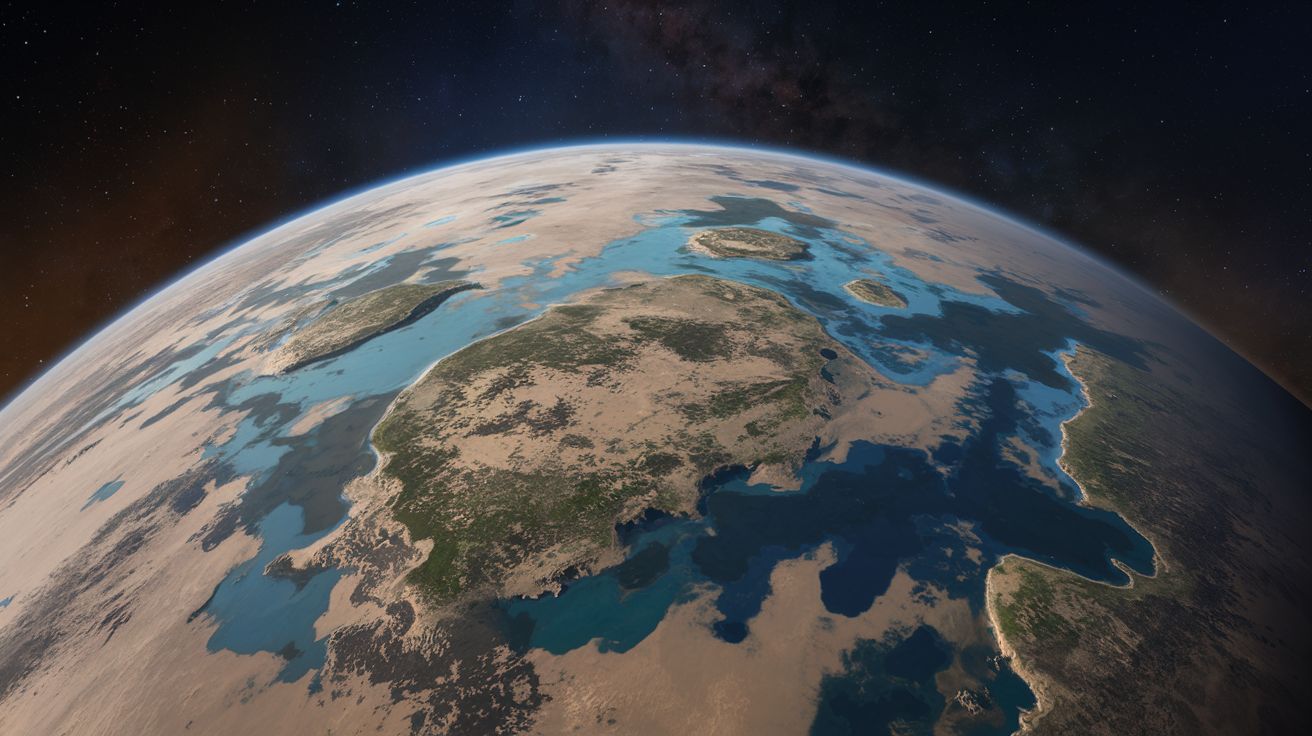The cataclysm that turned Earth into a muddy world 🟤
Published by Adrien,
Source: Proceedings of the National Academy of Sciences
Other Languages: FR, DE, ES, PT
Source: Proceedings of the National Academy of Sciences
Other Languages: FR, DE, ES, PT
Follow us on Google News (click on ☆)
Scientists from Virginia Tech University have finally found geochemical evidence of this unique period. Data, etched in carbonate rocks, indicate that record levels of carbon dioxide broke the intense cold of the last major glaciation. By studying lithium isotopes, the researchers were able to identify the composition of the meltwaters from that time, revealing an unprecedented separation of fresh and saltwater.

During this glacial period, extremely low temperatures sealed off the oceans, halting the cycles of evaporation, rain, and snow. This situation slowed down the erosion of rocks, a process that consumes carbon dioxide. Deprived of this natural "sponge," the atmosphere gradually accumulated this gas until it reached a critical level.
Over millennia, heat finally prevailed, melting the ice sheets. But this melting was uneven. Torrents of fresh water suddenly cascaded into the oceans, forming distinct layers of fresh water on top of the salty ocean waters. This striking contrast redefined the exchanges of heat and matter in the oceans, in a phenomenon geologists describe as a "reverse tsunami."
Researchers analyzed lithium isotopes in rocks to reconstruct this dynamic. These isotopes, present in coastal meltwaters, reveal the signature of interactions between fresh and salty waters in coastal areas, while the deeper rocks bear witness to seawater still highly saturated with salt.
This climatic "boundary" has opened new perspectives for researchers, who wish to understand how ecosystems and life adapted to such extreme environments. The results of this study, published in the Proceedings of the National Academy of Sciences, could shed light on the mechanisms of resilience of life forms in the face of climatic variations.
This teaches us that the Earth has experienced phases of climatic change so radical that even our imagination struggles to conceive of them. The living conditions of this period, however, did not erase all forms of life: on the contrary, they likely played a role in the evolution of biological resilience.
What is a "muddy world"?
The expression "muddy world" refers to a state of the Earth during which ice mixed with water, creating a planet covered in mud and melting water. This phenomenon likely took place at the end of a major glacial period, when the Earth, initially covered in ice, abruptly transitioned to a state of partial melt.
During this time, vast volumes of fresh water from melting ice poured into the oceans. This created a separation between the fresh meltwaters and the salty and dense ocean waters, forming a sort of muddy layer over the planet. This transition was accompanied by rapidly rising temperatures and drastic climatic changes.
Scientists are interested in this unique state because it illustrates how extreme climatic upheavals can radically transform the oceans and atmosphere, while also testing the limits of terrestrial ecosystems' resilience.